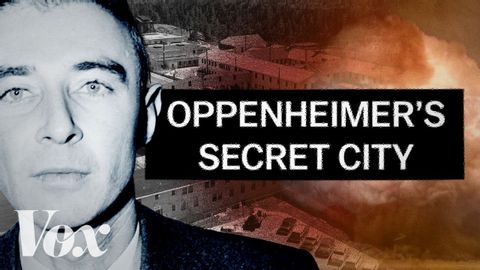帶你一探究竟《奧本海默》中的神秘城市 (Oppenheimer’s secret city, explained)
神谷菜々子 發佈於 2023 年 08 月 16 日  沒有此條件下的單字
沒有此條件下的單字US /ɪk'strimlɪ/
・
UK /ɪkˈstri:mli/
- adv.極端地 ; 非常地;非常;從極端的角度來看
US /kəˈmjunɪti/
・
UK /kə'mju:nətɪ/
- n. (c./u.)社區;團體;社群意識;線上社群;(生態)群落;實務社群;歐盟
- adj.社區的;共同的
US /ˈprɑmənənt/
・
UK /ˈprɒmɪnənt/
US /ɪˈstæblɪʃ/
・
UK /ɪˈstæblɪʃ/
